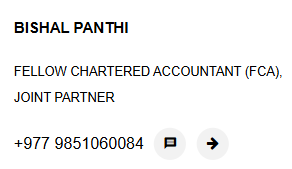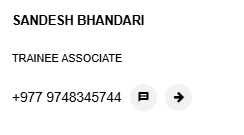
25 June 2025 | INSIGHTS
Cooperatives are member-owned and member-managed organizations established to fulfill the shared economic, social, and cultural aspirations of their members. Operating under the principle of “One member, One vote”, cooperatives promote equality and democratic participation by ensuring equal decision-making power, regardless of financial contribution. In Nepal, cooperatives have a long-standing history dating back to 1960 BS (1903 AD) and have played a significant role in enhancing financial inclusion and supporting community-based development.
According to the Nepal Rastra Bank’s Financial Stability Report for 2023/24, the total number of cooperatives reached 31,450, encompassing approximately 7.85 million members. The collective member capital fund amounted to NPR 94.72 billion. During the review period, the cooperative sector mobilized deposits of NPR 478.11 billion and disbursed credit totaling NPR 405.30 billion. Additionally, the sector made a substantial contribution to employment generation, with the number of direct jobs increasing to 94,002.
Despite these achievements, the cooperative sector in Nepal is currently facing a crisis. Many cooperatives are unable to return members’ deposits due to the widespread misuse of funds by boards of directors and senior management. The root causes of this crisis include weak regulatory oversight, management override, poor governance structures, political interference, inadequate financial management, and limited awareness among members.
In response to these challenges, the Government of Nepal has implemented key reforms. Notably, it amended the Cooperative Act and established the National Cooperative Regulatory Authority (NCRA) to strengthen the regulation and supervision of cooperatives. The Authority aims to improve governance, safeguard members’ savings, enhance transparency, and foster sustainable sectoral growth.
Furthermore, as part of its corrective measures, the Nepal Rastra Bank (NRB) issued directives and standards applicable to savings and credit cooperatives under Clause (F1) of Section 5(1) of the Nepal Rastra Bank Act, 2058 B.S., and Sub-section (1A) of Section 151 of the Cooperative Act, 2074 B.S. The NCRA also issued similar standards reinforcing oversight and promoting regulatory compliance within the sector.
In this article we provide an overview of the key regulatory provisions introduced by the directives.
CONTENTS
![]() INTRODUCTION AND EXECUTIVE SUMMARY
INTRODUCTION AND EXECUTIVE SUMMARY
![]() PROVISIONS RELATED TO FINANCIAL RESOURCE MOBILIZATION
PROVISIONS RELATED TO FINANCIAL RESOURCE MOBILIZATION
![]() PROVISIONS RELATED TO LOAN LIMITS, CLASSIFICATION AND MANAGEMENT
PROVISIONS RELATED TO LOAN LIMITS, CLASSIFICATION AND MANAGEMENT
![]() PROVISIONS RELATED TO LIQUID ASSETS
PROVISIONS RELATED TO LIQUID ASSETS
![]() PROVISIONS RELATED TO INTEREST RATES AND SERVICE CHARGE
PROVISIONS RELATED TO INTEREST RATES AND SERVICE CHARGE
![]() PROVISIONS RELATED TO CAPITAL FUNDS
PROVISIONS RELATED TO CAPITAL FUNDS
![]() PROVISIONS RELATED TO CORPORATE GOVERNANCE
PROVISIONS RELATED TO CORPORATE GOVERNANCE
![]() OTHER MISCELLANEOUS PROVISIONS
OTHER MISCELLANEOUS PROVISIONS
INTRODUCTION AND EXECUTIVE SUMMARY
These directives apply to all saving and credit cooperative institutions (hereinafter “Cooperatives”). established under Section 3 of the Cooperative Act, 2074, primarily engaged in savings and credit operations. The directives have been effective since 21 Chaitra, 2081 (3 April 2025)
This directive introduces a comprehensive framework aimed at strengthening the institutional and financial discipline of cooperatives across the country. These updated provisions align cooperative practices with evolving economic realities, risk management needs, and good governance standards.
The introduction of the Capital Fund Requirement, which was mandated exclusively for the banking sector only, marks a significant regulatory development aimed at strengthening the financial stability of the Cooperatives. This requirement compels Cooperatives to maintain a minimum level of capital funds as a safeguard against potential risks and losses.
PROVISIONS RELATED TO FINANCIAL RESOURCE MOBILIZATION
Limitations on Deposit Collection
The cooperative can collect deposit only from its members, and only up to 15 times the amount of its Primary Capital Fund.
The cooperative can collect deposits from each member up to following limits:
| Operation Area | Maximum Limit (NPR) |
|---|---|
| One district | 10 Lakhs |
| More than one district | 25 Lakhs |
| More than one province | 50 Lakhs |
Deposits collected before Poush 14, 2081, must be brought within the limit as above within two years from above date i.e., within Poush 13, 2083.
The cooperative may operate normal, recurring, and fixed-term deposit accounts with a maturity period of up to three years. However, recurring (नियमित) deposits must comprise at least 25% of the total deposit collection.
For monitoring of the deposit and borrowing limits, the primary capital, capital fund and total assets of the previous quarter shall be considered.
Members depositing more than NPR 10,00,000 must mandatorily disclose the sources.
The cooperative must implement a deposit mobilization guideline approved by the General Assembly.
Limitation on Borrowings From Bank and Financial Institutions
Cooperatives may borrow up to 5% of their total assets from banks, financial institutions, or cooperative banks, provided that the total borrowing does not exceed 100% of their capital fund.
However, cooperatives that have 51% or more of their investments based on collective guarantees may borrow up to 20% of their total assets or up to 10 times their capital fund, whichever is lower.
PROVISIONS RELATED TO LOAN LIMITS, CLASSIFICATION AND MANAGEMENT
Lending Restrictions and Conditions for Cooperatives
The cooperative shall not provide loans to members within less than three months of their membership.
The loans to be disbursed per member shall not exceed 15% of the primary capital.
The cooperative may disburse collateral-free loans to its members with recurring deposits, up to five times the recurring deposit amount or NPR 500,000, whichever is lower. While disbursing these collateral-free loans, guarantees from at least other two members are required.
Board directors may not avail loans from the cooperative other than the loans against their deposit in the organization
Except for specialized cooperatives, large-scale cooperatives must disburse at least 50% of total loans to productive sectors like agriculture, industry, and business operations/expansion. Cooperatives not meeting this threshold must comply the same within Ashadh end, 2083.
“A specialized Cooperatives means a cooperative formed on the basis of professional organisation under Section 3(5) of the Cooperative Act, 2074 ”
“A large scale cooperatives means a cooperative having deposit or loan amount exceeding NPR 25 crores in its latest audited financial statements.”
Cooperatives may provide a moratorium period for agriculture, industry, or business loans. The moratorium period must align to the purpose of the loan and must be approved by the board. After the expiry of the moratorium period, the loan repayment schedule must be structured so that the interval between any two instalments does not exceed three months.
When obtaining a loan from a bank, financial institution, or cooperative bank by pledging a borrower’s property as collateral, the cooperative shall not obtain an amount exceeding the original loan amount disbursed to that borrower. However, this provision shall not restrict the cooperative from obtaining a loan for institutional purposes by pledging the property of its director.
Permissible Investment Areas for Cooperatives
A cooperative is restricted from making investments except in specific areas permitted by law. These include investments in the shares of licensed cooperative banks, microfinance institutions, and membership in unions or federations as outlined under the Cooperative Act, 2074.
Cooperatives with continuous net profit for the past three years, having no accumulated losses, and have maintained the minimum required capital fund, may purchase/construct land and building through competitive bidding process. However, such investment shall not exceed 25% of the primary capital or 50% of reserve fund, whichever is lower. Any excess investment than the prescribed limit will result in the deduction of the equivalent amount from the calculation of primary capital.
Furthermore, Such purchases or constructions must obtain prior approval from the general assembly through a majority vote of at least 51%. In addition, the cooperative must submit information regarding the purchase or construction to the regulatory authority within 30 days of execution.
Collateral Requirements and Restrictions in Cooperative Lending
A cooperative may disburse loans to its members against the security of their deposits only up to a maximum of 90% of the respective deposit amount.
While disbursing loans against immovable property as collateral, the maximum loan amount shall be determined based on the collateral’s valuation, with up to 60% allowed in the case of sub-metropolitan or metropolitan cities, and up to 70% in the case of municipalities or rural municipalities.
The cooperatives shall disburse loans only against the collateral of the borrower or a member of their immediate family. Any loans disbursed through other means prior to the enactment of this provision must be regularized by the end of Ashadh 2083.
The cooperatives may disburse up to 80% of the total project cost as a loan, secured against the project itself, to the borrowing member.
The cooperatives shall not disburse loans against the security of its own share held by its member.
Loans Classifications and Provisioning
Loans disbursed by a cooperative shall be classified based on the timeliness of instalment or interest payments. The table below outlines the categories of such loans along with the corresponding loan loss provision (LLP) requirements :
| Classification | Basis for Classification | LLP |
|---|---|---|
| A. Performing Loans | ||
| 1. Pass Loan |
|
1% |
| B. Non-Performing Loans | ||
| 1. Substandard |
|
25% |
| 2. Doubtful |
|
50% |
| 3. Loss |
|
100% |
In exceptional circumstances, and only in cases where the regulatory authority has issued a guideline, a loan may be rescheduled or restructured for a specified period based on a written request from the borrower citing valid reasons, subject to the approval of the Board.
If any installment of loan exceeds its due date, the entire loan shall be reclassified according to the period of overdue, and an appropriate loan loss provision shall be made accordingly.
Other Regulations on Collateral
Once the full amount receivable under a loan is recovered, the collateral held as security must be released within seven working days of a written request from the borrower.
In the event of an unsuccessful loan recovery through auction of the collateral property, the cooperative shall take ownership of the collateral at the lower of either its market value or the recoverable loan amount. If the market value is lower, the resulting loss shall be recognized in the profit and loss account for the corresponding fiscal year.
The property acquired as above shall be disposed of at the earliest and 100% loan loss provision shall be created from the date taken into possession.
The Cooperative shall submit details of loan classification and their loan loss provisioning to the concerned authority in a format prescribed under Table 3.1 and Table 3.2 of the Directive within fifteen (15) days following the end of each quarter.
PROVISIONS RELATED TO LIQUID ASSETS
Liquid Assets to be maintained
The cooperatives shall maintain a minimum of 15% of its total deposit liabilities in the form of liquid assets. The following shall be considered as liquid assets for this purpose:
– Cash held in the cooperative’s vault. – Investments in government bonds. – Amounts deposited in bank accounts of banks and financial institutions (BFIs) licensed by Nepal Rastra Bank. – Amounts deposited in bank accounts of licensed cooperative banks. – Ninety percent (90%) of the amount maintained as fixed deposits in bank accounts of BFIs or licensed cooperative banks, subject to a capital of 5% of the total deposit liabilities.If any loan has been obtained by the cooperative using fixed deposits or government bonds, as mentioned above, as collateral security, the outstanding loan amount under such arrangements shall be deducted when calculating the total liquid assets.
The cooperative shall calculate liquid assets monthly using the weekly average method. The corresponding report must be submitted within seven days following the end of each month to respective regulatory bodies.
PROVISIONS RELATED TO INTEREST RATES AND SERVICE CHARGE
Interest Rate Determination
The interest rate shall be determined in accordance with Section 51 of the Cooperative Act, 2074 and shall be applied uniformly to all members.
The difference between the interest rate on deposit and that on loans shall not exceed six percent. The weighted average method shall be used for determining interest rates on deposit and loans.
The published interest rates on loans and deposits shall be uniform for all members. These interest rates may be reviewed and revised on a monthly basis.
Other Provisions on Interest and Service Charge
The interest rates on deposits and loans, methods of interest calculation, penalty provisions, and service charges shall be approved by the Board.
For all the loans, only the service charge, interest, and penalty interest may be levied. Additional charges, such as those related to obtaining blacklisting information, may be recovered from the borrower only to the extent of the actual cost incurred by the cooperative.
Interest shall be calculated and charged daily at the prescribed rate, based on the outstanding loan balance.
Information relating to loans and deposits interest rate, interest and penalty charging methods, and loan service charges shall be submitted to the regulatory authority within fifteen days following the end of each quarter.
PROVISIONS RELATED TO CAPITAL FUNDS
Core Capital
The cooperative shall maintain a minimum Core Capital ratio of four percentage of total risk-weighted assets where:
“Core capital includes the amount of share capital, reserve fund, loss-reimbursement fund and accumulated profit/loss.”
Core capital ratio shall be measured as core capital divided by total risk weighted assets and multiplied by hundred.
Supplementary Capital
Large-scale cooperatives shall measure supplementary capital in addition to the minimum core capital requirement and shall maintain a minimum capital fund ratio of eight percent of total risk-weighted assets.
The capital fund ratio shall be calculated as the sum of core capital and supplementary capital, divided by total risk-weighted assets, and multiplied by one hundred.
Components of Supplementary Capital
Total Loan loss provisions for performing loans. Any additional loan loss provisions created for non-performing loans, provided that such provisioning does not exceed one and a half percent of the total risk-weighted assets of the cooperative. Amounts held in the asset revaluation reserve, limited to the lower of the actual amount in the reserve or two percent of the supplementary capital. Amounts held in other reserves or funds for which the specific purpose has not been defined.For the purpose of calculating the total capital fund, the amount of supplementary capital shall not exceed the amount of core capital.
Risk Weighted Assets
For the purpose of calculating the core and the capital fund ratio, risk-weighted assets shall be computed by assigning different risk weights to various categories of assets as depicted in the following table :
| Particulars | Risk Weight (In %) |
|---|---|
| Cash in hand | 0 |
| Investment in government securities | 0 |
| Loans against Fixed Deposit | 0 |
| Deposit maintained at BFIs licensed by Nepal Rastra Bank | 20 |
| Deposit maintained cooperative banks | 20 |
| Loans secured by collateral | 100 |
| Loans without collateral | 100 |
| Fixed Assets | 100 |
| Other Assets | 100 |
| Other investments as prescribed by the Act | 100 |
| Loans secured by third party collateral | 150 |
Reporting of Compliance with Capital Fund Ratio
The cooperative shall submit the details of its capital fund to the regulatory authority within three months from the date of implementation of this guideline. If the institution’s core capital ratio and total capital fund ratio are found to be inadequate, an action plan shall be submitted outlining measures to achieve the required ratios by the end of Ashadh, 2083.
Monitoring of the capital fund shall be based on the balance sheet and profit and loss account of the most recent quarter, as certified by the Accounts Supervision Committee.
The Cooperative shall prepare and submit the capital fund details to the regulatory authority in the prescribed format of under table 6.1 and table 6.2 of the directive within one month following the end of each quarter.
A cooperative shall not declare or distribute dividends until it has fulfilled the minimum capital fund requirement. Any shortfall in the capital fund may be addressed by raising additional share capital from the members or by transferring profits to the General Reserve Fund.
Reserve fund
The Cooperative shall create a reserve fund as prescribed by the Cooperative Act. The following amount shall be credited to the fund:
– At least twenty five percent of the net profit for the year.
– Capital grant received from any cooperative, association or entity.
– Proceeds from the sale of fixed assets.
– Amounts received from other sources.
PROVISIONS RELATED TO CORPORATE GOVERNANCE
Board of Directors
The Board shall consist of a minimum of five and maximum of nine members including the Chairperson. Where possible, at least thirty-three percent representation of women members shall be ensured on the Board.
More than one person from the same family shall not be eligible for election as office bearers of both the Board and Audit Supervision Committee simultaneously during the same term.
No person shall be elected or remain in the position of director for more than two terms.
No member shall serve as director or office bearer in more than one institution simultaneously.
To be eligible for election to the Board, a candidate must not be blacklisted as per prevailing laws, or if previously blacklisted, must have completed three years since removal from the blacklist.
Directors shall not approve or disburse loans by placing themselves in the position of guarantor.
Any Director who is blacklisted or whose loans (or loans guaranteed by them) are classified as bad debts shall automatically be disqualified from the position, except in problematic institutions where prevailing provisions shall apply.
Directors shall not engage in any activities that misuse their position for personal benefit or cause harm to the institution.
Responsibilities and Conduct of the BOD
Develop and implement necessary operational procedures relating to staff employee administration, deposit collection, loan disbursement and recovery.
Implement findings from the reports of account supervision committee and findings of internal and external audit.
Provide requested information to the regulatory bodies and comply with their direction.
Publish financial statements approved by the general meeting in a format prescribed by the regulatory authorities.
Formulate and implement code of conduct to be appointed as board of director, chief executive officer, manager and officer of the cooperative along with minimum education qualifications and experience.
Board members shall not interfere in the day-to-day operations of the cooperative.
In cooperatives with an annual turnover exceeding NPR 20 million, a director shall not simultaneously serve as an employee of the same cooperative. If a director is found to be holding both positions, he/she must resign from one of the roles within three months from the effective date of these directives.
All board members and employees of the cooperative must submit a declaration of their personal property in the prescribed format within thirty-five days after the end of each fiscal year.
Qualifications of Chief Executive Officer/Manager:
No outstanding loans from the cooperative.
No ongoing criminal proceedings
Not currently blacklisted, or if previously blacklisted, must have completed 3 years since removal
Not involved with other cooperatives
Not a member of any political party
Minimum age: 21 years
Educational qualifications of bachelor degree for large cooperatives and Proficiency Certificate Level or 10+2 for other cooperatives.
No immediate family members in the Board Directors.
The cooperatives must notify of the appointment of the chief executive officer with 15 days of appointment.
The chief executive serves a 4-year term and may be reappointed once based on performance. Appointments made after these guidelines are issued will be considered the first term, with only one reappointment allowed.
The chief executive’s salary, benefits and other facilities shall be set by the BOD and must be fully disclosed in the annual report. No additional benefits may be provided beyond what is stated in the report.
Conduct to be Followed by Employees
Employees must obtain prior written approval from the cooperative’s management before engaging in part-time employment or any other professional activities outside the organization. Such approval may be granted only if the proposed activity does not adversely affect the interests of the cooperative.
Employees shall only be entitled to loans and facilities as specified in the cooperative’s approved employee bylaws. No additional loans or facilities shall be provided, except for the saving deposit facility available to employees as members of the organization.
The organization shall allocate a minimum of 2% of the total salary and allowance expenses of the preceding fiscal year for training and professional development activities each year to enhance employee skills.
OTHER MISCELLANEOUS PROVISIONS
Member Rights and Protection Measures in Cooperative
Membership of the organization shall remain valid as long as the member has any outstanding loan or deposit obligations with the organization.
The organization shall not charge any service fees beyond those prescribed by the prevailing Acts, Rules, and Directives of the regulatory bodies.
The cooperative must prepare and provide members with a concise statement or booklet that includes the following information:
– Details of the deposit accounts.
– Membership admission fees and procedures.
– Applicable interest rates and the method of interest calculation.
– Fees applicable for electronic transactions.
– Service and renewal fees related to loan disbursement &
– Amount receivable by the member upon cancellation of membership.
The organization shall provide orientation training focused on financial literacy to prospective members prior to granting membership or approving loans.
Any changes to interest rates on savings or loans must be promptly communicated to members through appropriate channels.
Loan disbursements to members must be processed through the member’s account maintained within the organization.
The organization shall establish a system to address and resolve member complaints. Large scale cooperatives must additionally appoint a grievance hearing officer and an information officer.
Other Compliances
The cooperative must fully adhere to the provisions of the Money Laundering Prevention Act, 2064 and comply with all related money laundering prevention directives issued by department of cooperative.
The cooperative shall obtain membership of the Credit Information Centre. Matters related to obtaining credit information prior to approving loans exceeding a specified threshold, applicable service fees, and blacklisting procedures shall be governed by the directives issued by the regulatory body.
The cooperative is prohibited from engaging in off-balance sheet transactions such as issuing letters of credit or guarantees. It shall not provide overdraft loans, trade goods for commercial purposes, purchase property for trading purpose, issue loans against gold or silver, engage in foreign currency dealings, or operate lottery or gift schemes.
KEY CONTACTS
Drop us a mail at enquiry@reliancecs.co for more information on our work in this arena and your requests.





